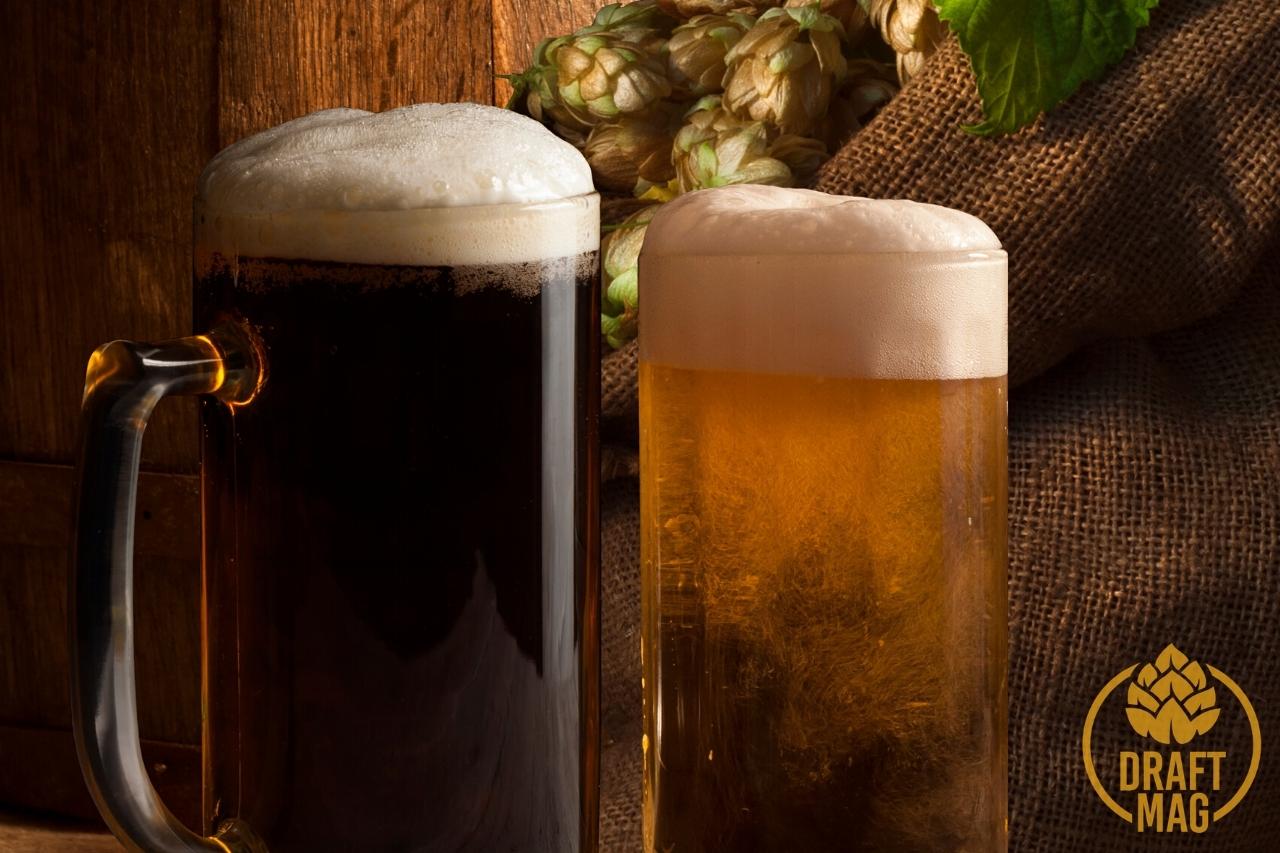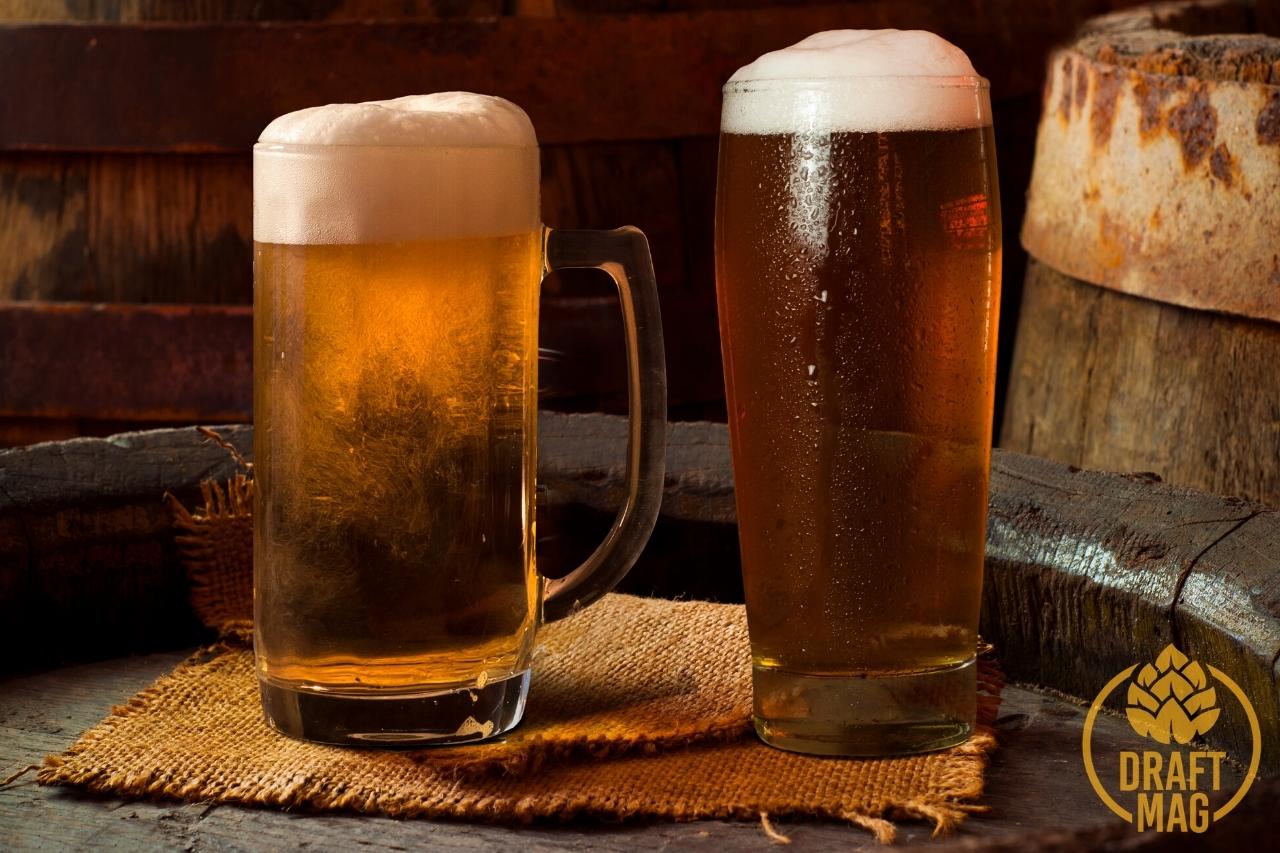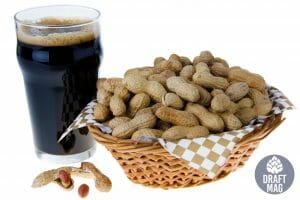What Is IBU Beer: The Ultimate Bitterness Guide for All Beer Styles
 IBU beer will be a new term for you if you are new to the craft beer world.
IBU beer will be a new term for you if you are new to the craft beer world.
This is one of the many acronyms used to describe the characteristics of a beer, and it stands for International Bitterness Unit (IBU).
When you visit a new brewery or go for a beer tasting experience, you may find this term mentioned on the tasting menu, and it is there to simply suggest how bitter the beer will be. In this guide, you will get all the information on the IBUs of different beers and how to make a fair judgment based on the readings.
What Is IBU Beer?
IBU, or International Bitterness Unit, is the index used to measure and understand how bitter your beer will turn out to be. Even though IBUs determine the bitterness of a beer, they are not a total indication of the beer’s quality. It is all a game of matching your personal preferences and understanding the math behind the system.
Everything About IBU Beer
IBUs are internationally set or derived units of measuring the bitterness in any beer. These values are calculated on the basis of the number of hops added to the wort. Hops have alpha acids, and the sugar in the wort gets converted to alcohol during the beer-making process.
These alpha acids, also known as bittering compounds, then undergo isomerization and oxidation, thereby producing isohumulones as a result. The alpha acids or hop resin determines the level of bitterness a beer will contain.
– What Is an IBU Scale?
The International Bittering Unit Scale is a unit of measurement that brewers use to quantify the levels of bitterness in any particular style of beer. The IBU scale was introduced as a way to quantify the guesswork that went into understanding bittering units and ultimately making good beers. This scale provides a benchmark or a standard of reference for all beers across the world, as it is internationally acclaimed and recognized.
While some big commercial breweries have their own specialized equipment to derive the bitterness, some others believe in considering the IBU scale as a guideline rather than a specific measurement.
The scale of IBU goes from 5 to 100. There are levels over 100, but it is difficult to tell the difference in bitterness levels beyond the 100 mark. For most beers, even craft beers, the typical range varies from 10 to 80 IBUs. Anything higher than a 60 mark is considered very bitter.
In practicality, 1 IBU equals 1 mg/liter of iso-alpha acids. Theoretically speaking, the saturation point of iso-alpha acids is 110 IBUs, which is approximately 78.6 IBUs (110×5/7).
– The Importance of Measuring IBU
In the brewing process, hops are added with the intention to add bitterness to the beer. Hops contain a chemical compound called alpha-acid, which breaks the sugars down from the grain used in the mash and induces bitterness in the beer.
The IBU measurement was invented to understand different beers and to quantify the bitterness in a beer, whether it’s a Pale beer, an IPA beer, or a Blonde beer. It is best to determine the IBU of a beer if you want to make multiple batches of the same beer and need to maintain consistency in taste.
It is like understanding a best-seller recipe and making sure everything in the dish goes according to measurement to maintain consistency. Otherwise, every other batch will end up tasting differently.
Brewers balance the desired levels of flavors in their beers by balancing notes of sweetness from natural sugars in grains and bitterness from hops. Additional flavors are added at later stages to get the final desired flavors and aromas.
– IBU Ranges by Style
Whether you are a seasoned beer drinker or a newbie in the world of craft beers, as you drink, you will realize there is a certain level of bitterness you want in your beers. Anything higher or lower might not make you enjoy beer as much.
 Every beer type has a certain IBU bracket within which the perceived IBU must remain. Understanding the IBU rating is key to appreciating the taste of different styles of beers.
Every beer type has a certain IBU bracket within which the perceived IBU must remain. Understanding the IBU rating is key to appreciating the taste of different styles of beers.
Here is a quick IBU chart or IBU beer list to help you understand what range of IBU each beer type can lie in.
-
Lager
Pale Lager beers or American Lagers tend to maintain an IBU bracket of 5-15. These beers are light, crisp and light-bodied. They are easy pours and easier drinks with very low-medium bitterness to help bring a subtle balance of flavors.
-
Sour Beer
Sour beers usually stay within the range of 5-15 IBUs with some extremely experimental ones that touch 25 IBUs. Sour-type beers have a natural sense of acidity, which balances the malt sweetness in the beer.
Since low amounts of sugar get dissolved in the process of making Sour, lower levels of IBUs exist in this beer style.
-
Pilsner
Pilsner beers vary in a range of 20-40 IBUs. The slight bitterness helps make the beer crisper and maintain the light body, which makes this style of beer very popular among enthusiasts.
-
Wheat Ale
A good Belgian-style Witbier is light, thinly bodied and slightly malty in character. A classic Wheat Beer is also full of fruity flavors and aromas, thereby resulting in a very low IBU count. These remain between 10-35 IBUs.
-
Pale Ale
Classic American Pale beers remain between a mid-high range of IBU count somewhere between 30-50. These beers are not heavily bodied or robust like stouts or IPAs and can tend to taste more bitter as there is very little material to balance their bitterness.
-
Porter
This Porter beer style and its sub-styles have an IBU bracket range of 18-50 IBUs. The highly Robust ones remain on the higher levels of IBU, while the classic Brown ones remain under 28 IBUs. There is a wide range of versatility when it comes to the IBU range of this type of beer.
-
Stout
Stout beers are dark, heavy-bodied and robust beers. Most of these have an Oats base and are lactose infused. They are usually silky smooth in nature. Their IBU count stays between 25-40, but Imperial ones can go up to 70 IBUs as they have bolder profiles.
-
IPA
Both India Pale Ale and Double IPA beers maintain an IBU range of 50-70 IBUs. American IPAs are heavy and have a high ABV alongside a high IBU. Double and Trippel IPAs tend to be darker and higher on the IBU index.
On the other hand, New England IPA IBUs are low as they have a fruity, citrusy and flowery balance.
-
Barley Wine
Barley wines are extremely intense beers with complicated flavors. A traditional American Barley wine is said to be the highest IBU beer with abundant malt sweetness and high hoppy bitterness.
They generally range somewhere between 50-80 IBUs, but some extreme ones go as high as 100 IBUs.
– Quick History
The IBU system of measuring the bitterness index in IBU beers was developed sometime between the 1950s and 1960s. This was the time when brewers used unrefrigerated hops that would usually lose up to 70 percent of their bittering capacity by the time they were added to the wort or kettle. The beers would instead get their bitterness from the oxidation products of the hop resins. Hence, the IBU method was developed to overcome any and every amount of discrepancy.
A correction factor of 5/7 was used. This fraction was divided by the amount of material derived from the hop resin in the wort. IBUs were invented because brewers found it hard to understand how to measure beer bitterness. It was all about “guessing” the right amounts, which usually led to experimental and dissimilar beers.
The mid 20th century was the starting point when the IBU values are important to brewers to determine the flavors of beers and to maintain quality control. It was also important to follow this system to make sure a particular beer stayed true to its style as listed under the style guidelines by the Beer Judge Certification Program.
– IBU and Craft Beers
If you pick a craft beer, check the IBU count to understand if you would like the beer or not. With these beers, there are a lot of extra additions that go in to make the beer-drinking experience unique and experimental. So the perceived bitterness levels can differ based on the add-on ingredients that balance the beer out.
FAQ
Here are some commonly-asked questions about the IBU of beer and answers from our experts.
– What Beer Has the Highest IBU?
American IPAs are one style that has the highest IBU — as mentioned before, most of them range between 50-70 IBU. While some Hazy IPAs can be as low as 30 IBUs, the classic American ones are mostly over 60 IBUs.
Technically, if we go by basic IBU standards and understanding, the higher the IBU, the more bitter the beer, but that is not always the case. IBU count is a guideline to maintain the flavor profile. A smokey Stout or a Barley wine can taste as light as a Pale ale even after having a high range of IBU.
– What Is the Lowest IBU Beer?
If you are looking for an extremely low IBU beer, you can try American Lagers or classic Belgian Wheat-style beers. Some of these beers contain as low as 10 IBUs and are extremely light and easy to drink.
– What Is the Difference Between an Unfiltered and Filter Beer?
Filtered beer is free of protein and yeast, whereas unfiltered beers are traditional Wheats or the NEIPAs that don’t look hazy as they have proteins in them. As the name suggests, filtered beer is what everyone drinks. It is what you get everywhere.
Conclusion
 IBU levels in a beer determine the overall flavors and bitterness of the beer, and it is an important part of understanding how the beer will taste overall. It is one of the main metrics that help brewers understand how their beer is going to turn out in the end.
IBU levels in a beer determine the overall flavors and bitterness of the beer, and it is an important part of understanding how the beer will taste overall. It is one of the main metrics that help brewers understand how their beer is going to turn out in the end.
Precise measurements help avoid extreme flavors.
- IBU determines the number of isomerized and oxidized bittering compounds that beer can contain to make it taste bitter.
- The IBU beer chart tells us how every beer style has a different range of IBU. While there is no set limit to the highest levels of IBUs, it is assumed that beers cannot contain anything higher than 110 IBU.
- IBU alcohol: The correlation between IBU and ABV need not be directly proportional. Higher ABV beers can have Lower IBUs and vice versa.
- Light Lagers tend to have the lowest IBUs while IPAs tend to have the highest IBU levels.
Now that you have understood how the IBU works and how to measure the bitterness index of your beer, what would you prefer: beers with high levels of bitterness or beers with mild IBUs?






